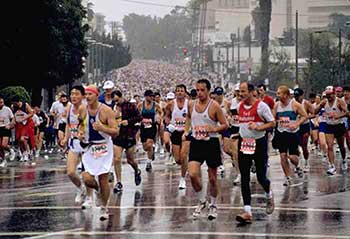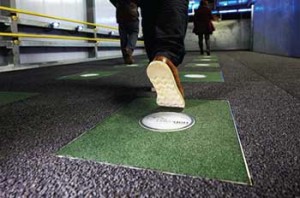
It’s common knowledge that running is a high-impact sport. Approximately three times the runner’s weight is imparted into the ground on every step. And the legs impart energy as they push and pull over the ground. That’s a lot of energy. What if you could translate that energy into electricity? Could we use it to light up some homes?
That’s exactly what the race organizers of the Paris Marathon were thinking this year. The race sponsor, Schneider Electric SA, in conjunction with Pavegen Systems Litd. of the United Kingdom, conducted a test using flexible, energy-harvesting tiles, made from recycled truck tires.

Laid across a 25 meter section of the Champs Elysees, the tiles were designed to convert some of the kinetic energy that each footstep generates. The tiles work by flexing about 5mm on every footstep, which can generate up to 8 watts of kinetic energy. The resulting energy was fed back into batteries.
The 40,000 runners who participated in the race generated 4.7 kilowatt hours of energy, enough to run a fluorescent lamp for 146 hours.
Imagine if every sidewalk and low-traffic street in every city was covered with these tiles. Human movement itself could become a powerful generator for the world’s energy requirements.
Dick Moss, Editor,
PE Update.com
To check out the PE Update.com website, click here
Physical Education Update
[tags]physical education,paris marathon,Pavagen Systems,Pavagen Tiles,energy-generating tiles>[/tags]










